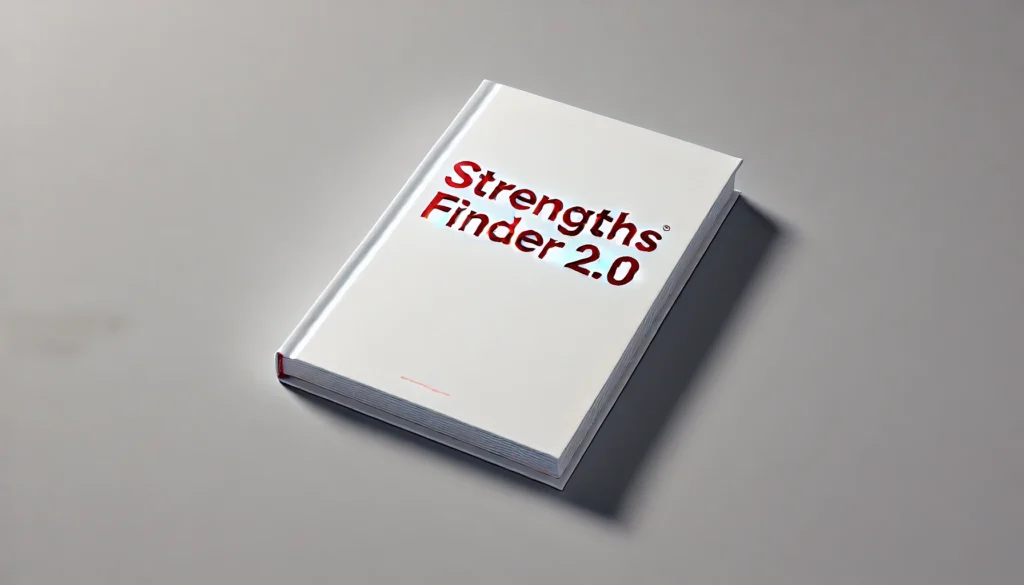Summary of StrengthsFinder 2.0 by Tom Rath

What’s in it for me?
Discover your unique strengths and how to leverage them for personal and professional success.
StrengthsFinder 2.0 by Tom Rath introduces a revolutionary approach to personal development by focusing on identifying and developing your natural strengths rather than fixing your weaknesses. This book, along with the Clifton StrengthsFinder assessment, helps individuals discover their top strengths and provides practical advice on how to apply them in their daily lives.
This summary explores eight key ideas from the book, highlighting the importance of strengths-based development, how to identify your strengths, and actionable strategies for leveraging them to achieve your goals.
Key Idea 1: The Shift from Fixing Weaknesses to Developing Strengths
Traditionally, personal development has focused on identifying and correcting weaknesses. However, StrengthsFinder 2.0 challenges this approach by advocating for a strengths-based philosophy. Rath argues that individuals have far more potential for growth when they focus on developing their natural talents rather than trying to improve in areas where they struggle.
This shift in mindset allows you to channel your energy into areas where you have the greatest potential for success. By understanding and embracing your strengths, you can achieve greater satisfaction and performance in both your personal and professional life.
Key Idea 2: The Science Behind StrengthsFinder—A 40-Year Study of Human Strengths
The Clifton StrengthsFinder assessment is the result of over 40 years of research conducted by Gallup on human strengths. The assessment identifies 34 distinct themes or talents that are common across different individuals. These themes represent natural patterns of thought, feeling, and behavior that can be productively applied.
Rath explains that by identifying your top five strengths, you gain insight into your natural talents and how they can be harnessed. The science behind StrengthsFinder is rooted in positive psychology, focusing on what’s right with people rather than what’s wrong, which is a more effective way to achieve lasting personal growth.
Key Idea 3: The Power of Knowing Your Strengths—Personalized Insights
One of the most valuable aspects of StrengthsFinder 2.0 is the personalized insights it provides based on your top five strengths. Unlike generic advice, these insights are tailored to your unique combination of strengths, offering a deeper understanding of how they manifest in your life.
For example, two individuals with the same strength, such as “Achiever,” may express it in different ways. The personalized reports help you understand the nuances of your strengths and how to apply them in various situations, from work to relationships.
Key Idea 4: Applying Your Strengths—Ideas for Action
The book doesn’t stop at identifying your strengths; it also provides practical ideas for action. For each of the 34 strengths, StrengthsFinder 2.0 offers ten specific strategies you can implement to maximize your potential. These action items are designed to help you leverage your strengths in everyday life and achieve your goals more effectively.
For instance, if “Communication” is one of your strengths, the book might suggest roles or activities where you can utilize this talent, such as public speaking, writing, or leading meetings. These actionable strategies empower you to turn your strengths into real-world results.
Key Idea 5: Building a Strengths-Based Team—Leveraging Collective Talents
StrengthsFinder 2.0 also emphasizes the importance of understanding and leveraging the strengths of others, particularly in a team setting. By recognizing the diverse strengths within a team, you can assign roles and responsibilities that align with each member’s natural talents, leading to increased productivity and job satisfaction.
Rath suggests that teams should have open discussions about their strengths and how they can complement each other. This strengths-based approach fosters collaboration, innovation, and a more positive work environment, as each person feels valued for their unique contributions.
Key Idea 6: Overcoming Weaknesses—Managing, Not Fixing
While the book focuses on strengths, it acknowledges that everyone has weaknesses. However, instead of trying to fix these weaknesses, StrengthsFinder 2.0 advocates for managing them. This might involve finding ways to minimize the impact of your weaknesses or partnering with someone whose strengths compensate for your areas of lesser talent.
For example, if you struggle with organization but excel in creativity, you might partner with someone who has strong organizational skills. This approach allows you to focus on what you do best while mitigating the effects of your weaknesses.
Key Idea 7: The Role of Leadership in Strengths Development
Leaders play a crucial role in fostering a strengths-based culture within organizations. Rath emphasizes that effective leaders recognize the strengths of their team members and create opportunities for them to use these strengths in their work. This not only enhances individual performance but also drives organizational success.
Leaders who focus on strengths are more likely to have engaged, motivated, and high-performing teams. StrengthsFinder 2.0 encourages leaders to prioritize strengths development as a key strategy for achieving long-term success.
Key Idea 8: The Lifelong Journey of Strengths Development
StrengthsFinder 2.0 makes it clear that discovering and developing your strengths is an ongoing journey. Your strengths are not static; they can evolve and be refined over time as you gain new experiences and insights. The book encourages continuous reflection and adaptation to ensure that you are always aligned with your strengths.
This lifelong commitment to strengths development allows you to stay resilient, motivated, and fulfilled in all areas of life. By consistently focusing on your strengths, you can navigate challenges more effectively and continue to grow both personally and professionally.
Closing Note
If this summary resonated with you, your feedback would be greatly appreciated. Your thoughts help us continue to improve and provide the content you love. See you in the next summary!